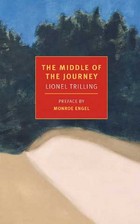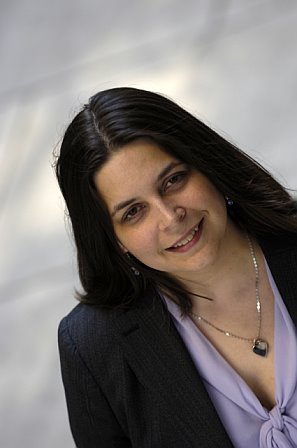One of my closest friends, a writer whom I admire greatly, has dedicated his latest book to me. I was one of the first people to suggest that he write it, and he claims to have profited from my counsel and encouragement. That’s nice to know–especially since the finished product turned out to be a first-rate piece of work. (I suppose it would feel uncomfortable to be the dedicatee of a piece of junk!) I received a copy of the uncorrected proofs in the mail the other day, and it was a decidedly strange experience to see “For TERRY TEACHOUT” printed on the fifth page. I’ve been written about in a couple of memoirs and mentioned in passing in a half-dozen other volumes of various kinds, but never before have I been the dedicatee of a book.
 Dedications and inscriptions are serious business for most authors, serious enough that you’d think more would have been written about them. One of the few extended discussions of the practice that comes to mind can be found in The Middle of the Journey, Lionel Trilling’s 1947 novel about a left-wing intellectual who survives a near-fatal illness that leaves him full of doubt:
Dedications and inscriptions are serious business for most authors, serious enough that you’d think more would have been written about them. One of the few extended discussions of the practice that comes to mind can be found in The Middle of the Journey, Lionel Trilling’s 1947 novel about a left-wing intellectual who survives a near-fatal illness that leaves him full of doubt:
On the flyleaf of Laskell’s book was written, “To Nancy and Arthur with my dearest love.” When Laskell had written the inscription he had been at first troubled by the thought that it was an excessive sentiment. He had then known the Crooms only two years and he thought that perhaps “dearest love” was too much to express what he felt toward them. He even wondered whether so full an expression of feeling might not be a burden to these young people, a responsibility of emotion that should not be forced on them, it had been the Crooms themselves who had first insisted on the friendship. And Laskell had gone so far as to pick up another copy of the book to write a more measured inscription. But with his pen almost on the new flyleaf, his sense of fact asserted itself–like many men, Laskell thought that written words should be very precise in the expression of one’s feeling and he asked himself whether it was not simply and literally true that the Crooms were the people in all the world he loved best. And he had turned the flyleaf and the title page and, on the dedication page, saw the initials E.F. standing alone. He had not been able to put “to the memory of E.F.”; nor even “To E.F.”–the dedication stood only as her initials. If Elizabeth Fuess had been still alive, he would have written a most affectionate inscription in the Crooms’ copy, but not the particular one he had already written. But now there was no Elizabeth, and the simple literal fact was that he gave the best of what love he had to Nancy and Arthur.
The finicky exactitude of that passage strikes me as exceeedingly Trillingesque–especially since the imaginary book in question is a treatise called Theories of Housing!
 Unless you’re Stephen King or Joyce Carol Oates, you only get so many opportunities to pay tribute to loved ones, friends, and colleagues by dedicating a book to them, so I’ve called my own shots with care. A Terry Teachout Reader is dedicated to Laura Demanski, my best friend, longtime co-blogger, and (in the words of my inscription) “the sister I wanted.” The Skeptic: A Life of H.L. Mencken is dedicated to Bill Buckley and Joe Epstein, both of whom inspired me in ways too numerous to recount.All in the Dances: A Brief Life of George Balanchine bears a collective dedication to thirty-one “friends in the second seat” whom I’ve taken to see Balanchine’s ballets over the years.
Unless you’re Stephen King or Joyce Carol Oates, you only get so many opportunities to pay tribute to loved ones, friends, and colleagues by dedicating a book to them, so I’ve called my own shots with care. A Terry Teachout Reader is dedicated to Laura Demanski, my best friend, longtime co-blogger, and (in the words of my inscription) “the sister I wanted.” The Skeptic: A Life of H.L. Mencken is dedicated to Bill Buckley and Joe Epstein, both of whom inspired me in ways too numerous to recount.All in the Dances: A Brief Life of George Balanchine bears a collective dedication to thirty-one “friends in the second seat” whom I’ve taken to see Balanchine’s ballets over the years.
Pops, needless to say, will be dedicated to Mrs. T, without whom it probably wouldn’t have seen print. I met her a few weeks before I fell ill in December of 2005. I don’t know that I would have pulled through that crisis had I faced it alone. Instead I fell in love, got well, got married, and acquired in the process a part-time editor with an exceedingly sharp eye. I can’t think of anyone more deserving of a dedication, but I promise that it won’t be fulsome, much less cute. While I rather like P.G. Wodehouse’s dedication of The Heart of a Goof to his daughter Leonora, “without whose never-failing sympathy and encouragement this book would have been finished in half the time,” I cringe at such horrors of coyness as the oft-quoted dedication of J.D. Salinger’s Franny and Zooey:
As nearly as possible in the spirit of Matthew Salinger, age one, urging a luncheon companion to accept a cool lima bean, I urge my editor, mentor and (heaven help him) closest friend, William Shawn, genius domus of the New Yorker, lover of the long shot, protector of the unprolific, defender of the hopelessly flamboyant, most unreasonably modest of born great artist-editors, to accept this pretty skimpy-looking book.
What could Salinger possibly have been thinking when he penned this wince-making paean? Far better to have kept it simple, the way Evelyn Waugh did when he dedicated Decline and Fall to “Harold Acton, in homage and affection.” That’s the stuff to give the troops, and I shall endeavor to do likewise.
